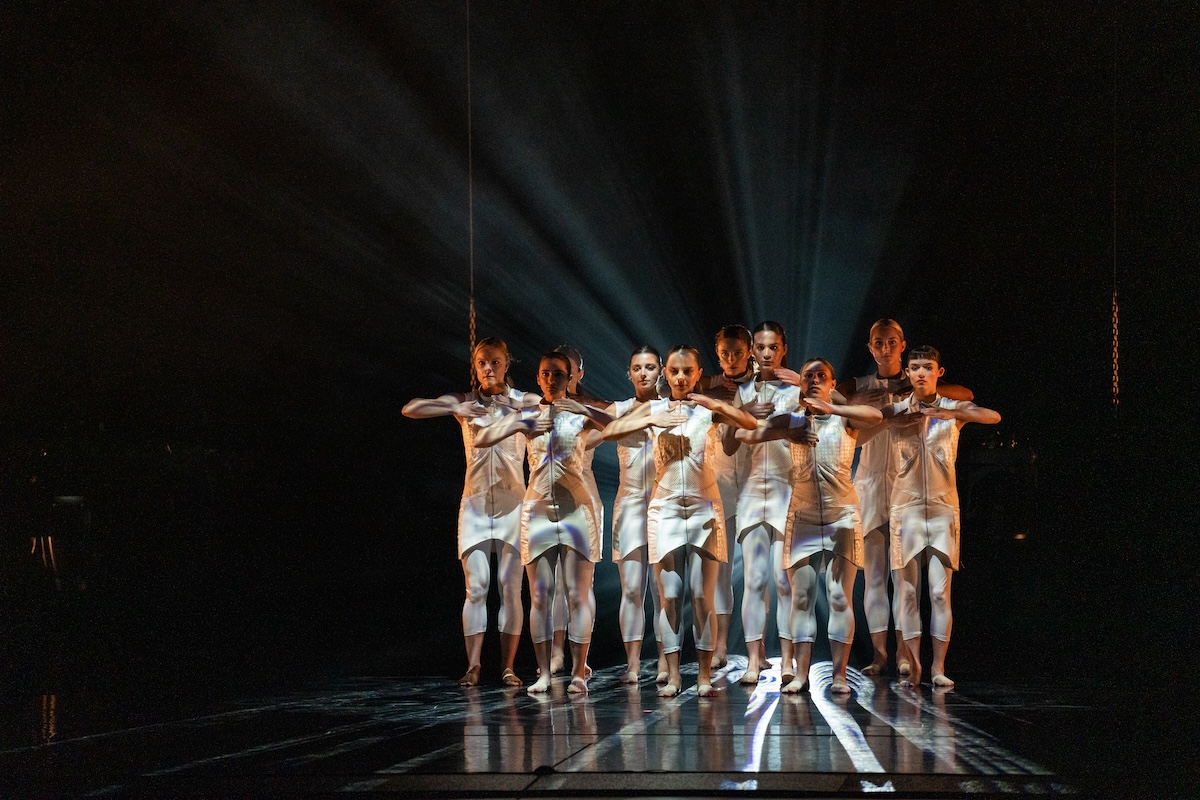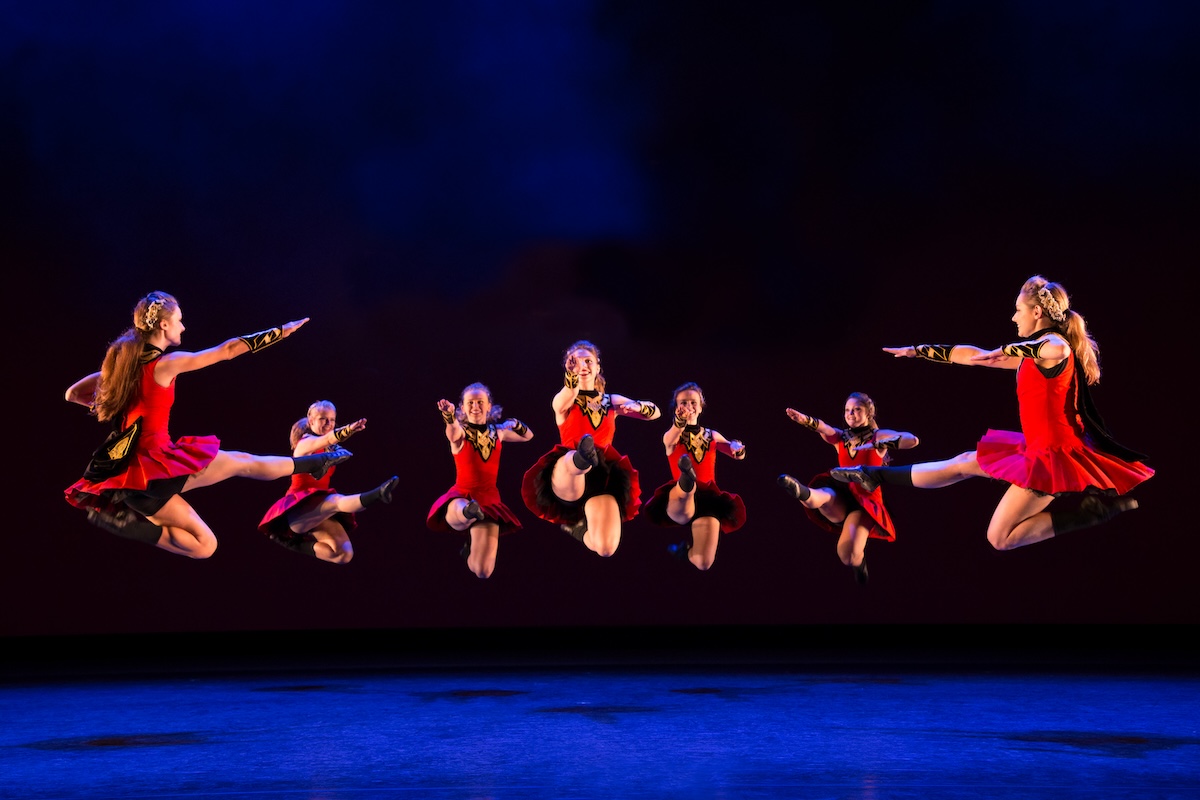
The Trinity Irish Dance Company is the dream of founder and choreographer Mark Howard, which has come to life. Last Saturday, the company concluded its season 35 opener at the Museum of Contemporary Art with a visual and aural kaleidoscope of dance. The live musical accompaniment from Brendan O'Shea and the TIDC Band was woven into the show, with the band performing with instruments and doing some fine dancing.
Group dancing is tribal and a show of power. When the clans meet, colors, patterns, and choreography can reenact history and tell a visual story. Celtic society is descended from tribal clans whose names have been carried on from Ireland, Scotland, and Wales. Trinity's performance told stories about pride, might, and the Troubles that roiled Northern Ireland under the yoke of British colonialism.
The Sash was a world premiere choreographed by Mark Howard, with associate artistic director Chelsea Hoy and Para Mar Dance Theatre founder and artistic director Stephanie Martinez. It was prefaced by a film conversation with the composer Kevin Sharkey, who was injured by a car bomb in Derry. Sharkey's recollection was emotional, and he explained how the music healed him. He explained that hope is essential and even stronger than love. He spoke of the Orangemen who terrorized the Catholics in Northern Ireland as a show of loyalty to Protestantism and the sovereignty of Great Britain. The Sash is not a reenactment. It is more an invocation of hope, of which Sharkey spoke.
I found the dancing alone to be a multimedia experience. I had not previously seen how intricate Irish dance's steps are, combining en pointe, tap, and exacting balance control. The dancers are percussionists who accompany the musicians as much as the fiddle, guitar, and drums accompany them. An Irish community has come to life with yelps from the audience and joyous clapping. It was a celebratory vibe. The program quotes George Bernard Shaw on the purpose of life. I found one of the lines particularly inspirational and indicative of the Trinity spirit. "I want to be thoroughly used up when I die, for the harder I work, the more I live."

As a person descended from enslaved and oppressed people, I felt a kinship with the people of Ireland, starting with the Troubles being televised daily and the hunger-strike protest of Bobby Sands and other IRA prisoners. Trinity danced with soul, allowing the movements to possess them. There were glimpses of other cultures with tribal roots. Percussionist Steven Rutledge led the performance of Black Rose with a Lambeg drum. There is a tradition of music heralding the approach of a rival clan. Music was often a part of keeping the soldiers' spirits up while in battle. The Orangemen appropriated the Lambeg drum into Derry and Ulster with their marches. Black Rose reclaims the instrument, and the dance reinforces that claim.
The program describes Black Rose as grounded in the bonshō tradition from Achi-Village, Japan. The bonshō is a bell that calls for peace and reconciliation. The dance was reminiscent of Taiko, Jazz, and Shubukai Dance Fusion performed in the same theater in 2024. The Taiko drums were used in tribal celebrations and on battlefields when Japanese tribes clashed. It was a beautiful way to see the differences and similarities that tie the human race together.
In addition to Brendan O'Shea and Steven Rutledge, Chris Devlin contributed guitar and beautiful vocal harmonies, and Jake James played the fiddle and the Bodhrán drum. Taylor Yocum was also a guest artist at Para Mar Dance Theatre. Guest musician Tommy Sagins played additional percussion, and guest choreographers Michelle Dorrance and Melinda Sullivan rounded out a great group of talent contributing to the celebration. I could have done without the fog effects, and some of the lighting could have come with a warning due to a bright back-and-forth swinging feature. Also, one of the speeches could have been saved for recognition in the program book. The audience came for the dancing and music, not a self-congratulatory moment. If you're not singing or dancing, move on, please.
The program was made up of ten performances of both dance and music. They are inextricably intertwined, and it was a joyous experience. At Saturday's performance, dancer Francisco Lemus spoke of never dreaming when he was a little boy in Mexico that he would one day perform with Trinity Irish Dance. There is a poignant resonance in what Lemus said in light of the oppression American nationalists are inflicting on the people of Mexico and other countries in Central America. The Trinity Irish Dance Company may be rooted in a proud Celtic tradition, but they recognize and share a universal heritage with other oppressed people. I enjoyed the experience and highly recommend seeing Trinity Irish Dance Company as they head into the future.
The Trinity Irish Dance Company had three performances on May 16, 17, and 18 at the Edlis Neeson Theater at the Museum of Contemporary Art. For more information, please visit https://trinityirishdancecompany.com. They will also be performing at the Auditorium in February of 2026.
If you enjoyed this post, please consider supporting Third Coast Review’s arts and culture coverage by making a donation. Choose the amount that works best for you, and know how much we appreciate your support!
